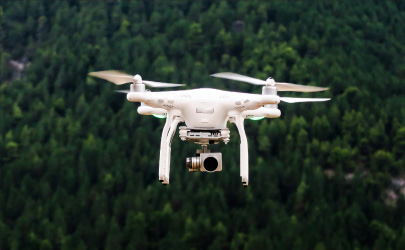Endurance in the Skies: How Fuel Cell UAVs Are Powering America’s Next Generation of Defense, Energy, and Environmental Missions

The U.S. UAV fuel cell market is undergoing a significant transformation influenced by advancements in technology, evolving mission requirements, and the growing demand for sustainable long-endurance drone operations in both defense and commercial sectors. Defense and homeland security represent the largest market segment, accounting for approximately 34% of the total market share. This sector's dominance is driven by its ongoing need for UAVs that provide extended flight durations, high payload efficiency, and dependable performance in remote or contested environments. Fuel cell-powered UAVs surpass the operational endurance of traditional battery-operated drones, making them essential for intelligence, surveillance, and reconnaissance missions. The U.S. Department of Defense has intensified the adoption of hybrid-electric propulsion and hydrogen-based UAV systems for various tactical and strategic missions. In the realm of homeland security, these UAVs are increasingly utilized for border patrol, coastal surveillance, and disaster response, highlighting a shift towards more sustainable, quieter, and energy-efficient defense technologies.
The energy and utilities segment, representing around 16% of the market, is witnessing a steady increase in the integration of UAV fuel cells for monitoring pipeline, transmission line, and renewable energy infrastructures. Companies in the oil, gas, and power transmission sectors rely on drones equipped with hydrogen fuel cells for extended inspections in remote or hazardous locations where traditional battery drones are limited by endurance constraints. The sector's movement towards predictive maintenance and autonomous inspection aligns well with the capabilities of fuel cell UAVs, facilitating continuous data collection over long linear assets. Notably, the deployment of high-endurance drones for offshore wind farm inspections and solar field mapping illustrates how this technology supports sustainability and operational efficiency initiatives. Furthermore, utility firms are collaborating with drone service providers and research institutions to develop customized UAVs designed for heavy-lift sensors and extended flight times.
In agriculture and forestry, which hold a 12% share of the market, rapid technological adaptation is occurring as practitioners integrate UAV fuel cells into precision agriculture and resource monitoring systems.
The capability of flying longer missions without requiring recharging enhances the coverage area for crop health assessments, irrigation planning, and pest management. Fuel cell UAVs are also employed in forest mapping, wildfire prevention, and ecosystem restoration initiatives where extended flight time is crucial for covering large terrains. This trend is closely linked to federal and state sustainability programs that promote clean agricultural technologies. Additionally, the integration with AI-powered analytics platforms allows for ongoing monitoring of biomass health and carbon capture potential, fostering a convergence between green energy and smart farming.
The construction and infrastructure inspection segment, constituting 10% of the market, increasingly utilizes UAV fuel cells for surveying and structural analysis of bridges, tunnels, dams, and urban development projects. A key trend in this sector is the application of fuel cell UAVs for high-precision photogrammetry and 3D modeling in large-scale projects, where prolonged flight endurance enhances mapping accuracy and data consistency. Construction firms are incorporating drones into Building Information Modeling (BIM) workflows, where real-time imaging contributes to progress tracking and quality assurance. Hydrogen-powered UAVs minimize downtime associated with frequent battery changes, thereby enabling seamless coverage of extensive or hazardous sites. This trend is further propelled by the rising need to inspect renewable infrastructure such as wind turbines and transmission lines within contemporary construction portfolios.
The telecommunications sector, holding 8% of the market, is broadening its use of UAV fuel cells for network infrastructure management, particularly in tower inspections and line-of-sight testing. As the 5G rollout progresses across the United States, telecom operators are leveraging fuel cell drones for high-altitude and long-distance inspection missions. The increasing reliance on aerial deployment of temporary communication relays during natural disasters underscores the reliability of hydrogen-powered UAVs in maintaining connectivity under critical conditions. This application is benefitting from developments in lightweight fuel cell stacks and modular power management systems, which enhance drone payload capacity without compromising endurance.
In the logistics and delivery services domain, which accounts for 11% of the market, UAV fuel cells are emerging as a game-changer for long-range delivery of medical supplies, parcels, and emergency materials. Unlike battery-driven UAVs, which face range and load limitations, fuel cell drones enable faster turnaround times and longer operational cycles. The trend towards decentralized delivery networks, particularly in rural and disaster-prone areas, is expected to further drive the adoption of this technology.